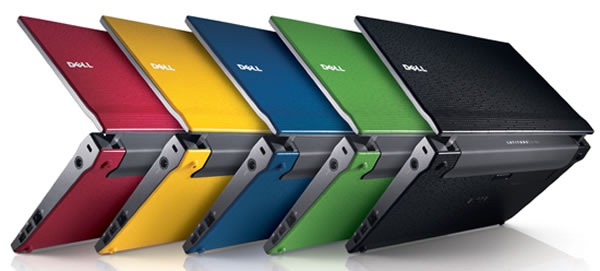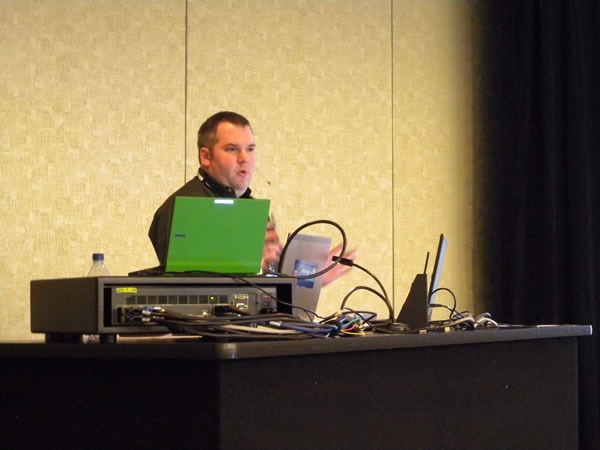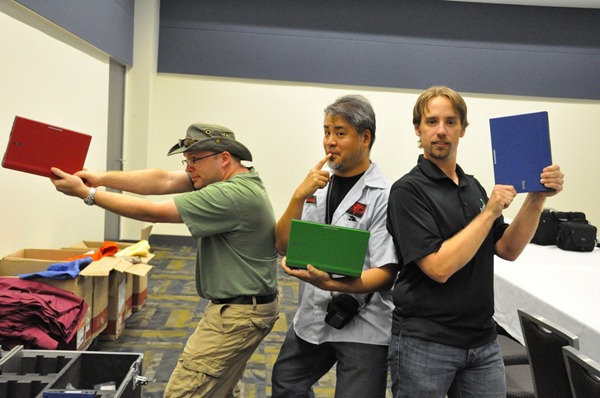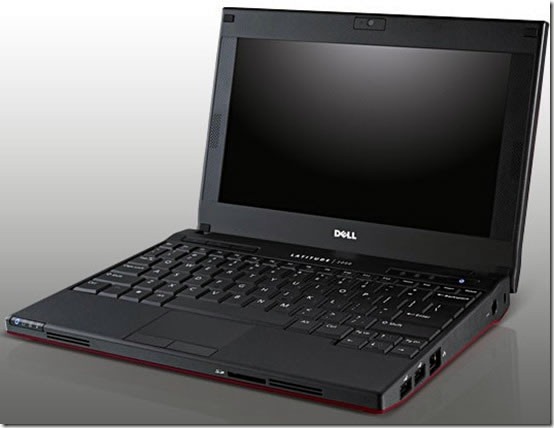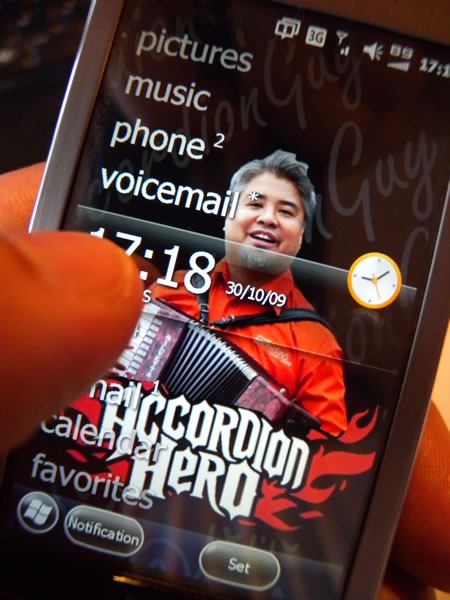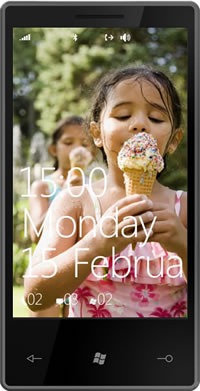
A New Windows for the Phone
Ever since joining The Empire, I’ve been saying that Windows Mobile needs to go back to the drawing board. While there was good technology lying in its innards – mobile versions of the .NET framework, SQL Server and Office – treating the mobile form factor as “the desktop, but much, much smaller”, was the wrong approach. In the meantime, the Esteemed Competition were doing the right thing: designing their phones’ OS features and interface from the ground up rather than attempting to force-fit the desktop UI into a pocket UI.
Today at Mobile World Congress in Barcelona, Microsoft previewed the latest in a series of steps forward – consider Xbox to Xbox 360, Windows Vista to Windows 7, Live Search to Bing – there’s now Windows Phone 7 Series.
(The name’s a bit long. Whoever does the naming at Microsoft corporate HQ must get paid by the syllable.)
A Quick Look at Windows Phone’s Experience
A good starting point is this video, which covers Windows Phone’s features in three minutes, thirty seconds:
You can take an interactive tour of the UI at the Windows Phone 7 Series site:
A Closer Look at the Windows Phone Experience
Over at Channel 9, Laura Foy has posted her interview with Joe Belfiore, VP Windows Phone 7 Program Management, who gave her a walkthrough of the goodies in Windows Phone (the video is 22 minutes, 18 seconds):
Some quick notes from the video:
- There are three mandatory hardware buttons, which are context-sensitive:
- Back
- Windows (the “Start” button)
- Search
- The screen is a capacitive touch-screen, capable of supporting multi-touch
- The Start menu is built up of tiles: little block representing the information and features that you care most about
- You can add your own custom tiles; Joe shows a “me” tile linked to his Facebook profile
- A browser with:
- Snappy performance
- Support for multitouch actions such as pinch zoom, double-tap to zoom and finger drag
- Very readable text, that to sub-pixel positioning in HTML
- Phone number recognition in HTML documents; touch them to dial them
- Street address recognition in HTML documents; touch them to get a map
- Multiple tabs
- The “People Hub”
- Aggregates Exchange, Hotmail, Gmail, Yahoo! Mail and other mail contacts
- Provides a live feed of your contacts
- Context-sensitive search:
- Press the “Search” button while in the People Hub, and you search your people list
- Press the “Search” button while in the Start menu, and it runs a web search
- Based on your query, it knows whether to give you a web search result or a local search result
- In the demo, Joe does a search for pizza and gets a map and results for pizzerias near him, and a quick pan over to adjacent pages yield directions and reviews
- A tap on “nearby” yield the locations of useful things like parking, ATMs and so on near the selected pizzeria
- In another demo search, Joe does a search for “Avatar” and it returns a list of nearby theatres and times for the movie Avatar; a quick pan to an adjacent page yields the results for local business and places with “Avatar” in the name
- Email:
- Easy pivoting between unread, flagged and urgent emails
- A caching system prevents you from seeing the dreaded “loading” screen
- Press “Search” within email and you perform a search of your email messages, by subject, text and so on
- Rotation: you can operate the phone in “portrait” or “landscape” mode
- Calendar:
- Support for both work and personal calendars
- ActiveSync works in the background and keeps the phone synced with email, contacts and calendar
- User-customizable UI colour schemes
- The “Pictures Hub”
- Gallery: Lets you browse all the pictures on your phone
- Mosaic: Recent and favourite pictures
- What’s New: New photos from your social networks
- Camera roll: A folder for photos taken with your phone
- Support for photo albums from Facebook and Windows Live, which you browse as if they lived right on your phone
- Music and Video
- History: Most recently played music and videos
- New: New music and videos added since the last sync
- Zune HD-style marketplace searching and support for Zune subscriptions with unlimited music plays
- The “Me” tile
- Lets you update your status on places like Facebook
- Nice little typing features like auto-spelling-correction and a special soft keyboard for emoticons
- The UI concept: Windows Phone is task-centric, not app-centric, with a hub associated with each: people, photos, media
- There’s also a games hub, which ties into Xbox Live
- Third-party applications and games? Wait…
Wait a Minute…What About Third-Party Apps and Games?
Here’s the deal: the announcement at Mobile World Congress was about showing what Windows Phone can do. As for what’s possible on the developer front, it’ll all be announced at the MIX10 Conference, which takes place from March 15th through 17th in Las Vegas.
There will be a dozen sessions at MIX10 for Windows Phone, and they promise to be quite interesting. I’ll be at MIX10, and will blog what I learn from these sessions when they take place.
You can save $200 off the price of MIX10 registration if you register before February 21st, so if you want to get in on the ground floor with Windows Phone and save some money, register now!
What the Tech Press is Saying
Pretty good stuff, actually. Rather than bury you with links to a zillion blog entries filed from Mobile World Congress, I thought I’d pick two of the big tech blogs, Gizmodo and Engadget:
Here’s what Gizmodo has to say about the new Windows Phone:
It’s different. The face of Windows Phone 7 is not a rectangular grid of thumbnail-sized glossy-looking icons, arranged in a pattern of 4×4 or so, like basically every other phone. No, instead, an oversized set of bright, superflat squares fill the screen. The pop of the primary colors and exaggerated flatness produces a kind of cutting-edge crispness that feels both incredibly modern and playful. Text is big, and beautiful. The result is a feat no phone has performed before: Making the iPhone’s interface feel staid.
If you want to know what it feels like, the Zune HD provides a taste: Interface elements that run off the screen; beautiful, oversized text and graphics; flipping, panning, scrolling, zooming from screen to screen; broken hearts. Some people might think it’s gratuitous, but I think it feels natural and just…fun. There’s an incredible sense of joie de vivre that’s just not in any other phone. It makes you wish that this was aesthetic direction all of Microsoft was going in.
Here are Engadget’s impressions, after having some hands-on time with Windows Phone:
The design and layout of 7 Series’ UI (internally called Metro) is really quite original, utilizing what one of the designers (Albert Shum, formerly of Nike) calls an "authentically digital" and "chromeless" experience. What does that mean? Well we can tell you what it doesn’t mean — no shaded icons, no faux 3D or drop shadows, no busy backgrounds (no backgrounds at all), and very little visual flair besides clean typography and transition animations. The whole look is strangely reminiscent of a terminal display (maybe Microsoft is recalling its DOS roots here) — almost Tron-like in its primary color simplicity. To us, it’s rather exciting. This OS looks nothing like anything else on the market, and we think that’s to its advantage. Admittedly, we could stand for a little more information available within single views, and we have yet to see how the phone will handle things like notifications, but the design of the interface is definitely in a class of its own.
(In another article, Engadget simply summed it up with “Microsoft is playing to win”.)
Watch this Space!
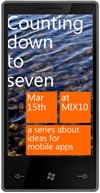 We’ll have more announcements about Windows Phone over the next few weeks, so keep an eye on this blog!
We’ll have more announcements about Windows Phone over the next few weeks, so keep an eye on this blog!

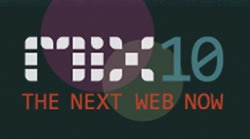
 “d00d,” began the capitalization- and punctuation-free email I received on Sunday, “coding horror atwood is totaly [sic] waling on ur azz”. Curious to see exactly how Jeff was “waling on my azz”, I pointed my browser at his blog,
“d00d,” began the capitalization- and punctuation-free email I received on Sunday, “coding horror atwood is totaly [sic] waling on ur azz”. Curious to see exactly how Jeff was “waling on my azz”, I pointed my browser at his blog, 